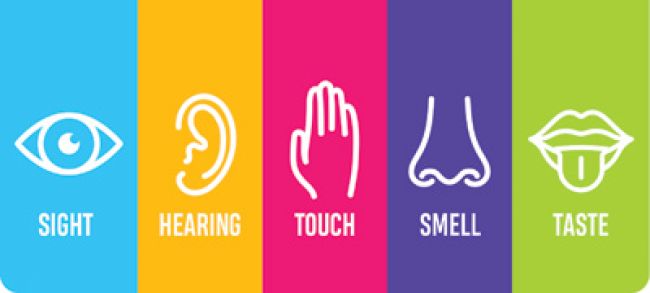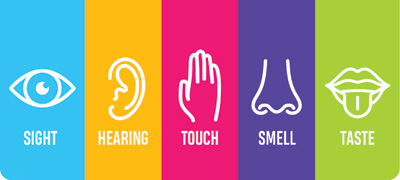
Are You Using Your Five Senses to Stay Safe?

All of us have experienced mishaps in our daily lives, both at home and at work. An accident typically is defined as an unwanted incident occurring unexpectedly and unintentionally, usually resulting in damage or injury.
In our work lives, proper training develops our mindset as well as our knowledge. Increasing our knowledge allows us to identify known hazards and to recognize unknown hazards. Training value is understood and incorporated into workplace law. OSHA’s General Duty Clause requires employers to furnish to each of their employees a workplace that is free from recognized hazards that cause or are likely to cause death or serious physical harm. In addition, each employee shall comply with OSHA rules, regulations and orders that are applicable to their own actions and conduct. We assure employees can follow the law by training them with the necessary knowledge and intangible tools to make them more effective.
The job hazard analysis or job briefing is an effective tool for identifying hazards. A job briefing is required by OSHA rules that employers and employees must abide by (see 29 CFR 1910.269(c) for general industry and 1926.952 for construction). The briefing is an intangible tool that uses recognition and reasoning through knowledge and experience. Here is where the human brain is leveraged to be successful. Guidance from OSHA requires that a job briefing discuss hazards associated with the job; the work procedures involved; special precautions; energy-source controls; and personal protective equipment requirements.
Of course, conducting an effective job briefing does not necessarily guarantee there won’t be any incidents on the job, but doing so can greatly reduce the odds of an undesirable outcome. Statistically, nearly 95% of sustained injuries or losses could have been prevented if the proper steps had been taken to control them, and that requires identification of the hazard first.
But the human brain has other intangible assets beyond knowledge and experience. Those additional intangible assets are our five senses that can aid us in recognizing potential hazards.
The Human Senses
When we hear the phrase “common sense,” some of us may think, “Well, it’s not so common, is it?” And while it’s true that levels of common sense vary from person to person, it’s also a skill that can evolve over time based on the experiences we have and the mentorship delivered to us by seasoned managers and co-workers. One of the most effective applications of good common sense is adopting a positive attitude toward safety policies and procedures, which means – among other things – never taking shortcuts or risks.
When it comes to our human senses, medical studies have found that we have up to 21 of them, depending on who is asked and how the word “sense” is defined. It is generally agreed, however, that there are five basic senses – sight, hearing, smell, taste and touch – at minimum. All of them help us to identify with or relate to the world around us and the conditions that exist. By definition, a sense is a specialized function or mechanism by which we receive and respond to external or internal stimuli. It is quite common for people to learn about the world by touching, tasting, smelling, seeing and hearing things around them.
The COVID-19 pandemic and social distancing practices have greatly affected our senses and thus our working lives. We do not get to see or interact with people as freely as we did in the past. We don’t hear the sounds that once filled our daily lives because so much has changed. With the use of face masks, perhaps our sense of smell – which is closely related to our sense of taste – has been the most adversely affected. And we now have a heightened awareness of all the things we touch, causing us to wash our hands more often to help prevent coronavirus infection.
Essentially, a heightened awareness of the five senses has come to the forefront of our lives recently – and it shouldn’t stop there. We need to keep this reawakening of our senses alive when it comes to our jobs and especially our safety-related tasks. These valuable senses provide many wonderful experiences and hopefully a greater appreciation for life. They also provide warning signs, alerting us to conditions we may need to rectify to prevent injury. How do we react to these indicators? Do we step back and review the situation to confirm it is safe to proceed, or do we press forward and hope that nothing bad will happen? Reviewing the situation is the right thing to do. Continuing to engage in an unsafe practice – even if it’s never caused an incident – does not make that practice safe or acceptable over time.
Protecting Our Sensory Organs
With the understanding that our senses help to keep us safe, it’s critical in our line of work to select and don the appropriate PPE to protect our sensory organs. The PPE must be designed and rated to prevent damage to the organs but also must not limit our ability to detect hazards. In the remainder of this article, let’s look at how each of our five senses can assist us in hazard detection as well as how we can safeguard them.
Sight
Eye protection is a must in nearly every task we perform, and there are many different types of eye protection available. Glasses, including those with side shields or face shields, are the most common type of eye protection. Tinting is available for use in different types of exposures, and it’s crucial to select the correct type to fit the working environment. With nearly any safety device, there also are ANSI and OSHA regulations that need to be met; in the case of eye protection, devices must meet ANSI Z87.1 and OSHA 1910.133 standards. Identifying the appropriate type of eye protection as well as its proper care and use is the correct approach to a good eye safety program. Seeing a potential hazard and taking the necessary mitigation actions is the correct safety attitude to have.
Hearing
Hearing protection is critical in many job applications. There are restrictions on levels and durations of noise exposure that we must comply with. Extended exposure can deteriorate hearing capabilities, which could affect safety. For example, a serious incident could occur if you are not able to hear someone warn you of a hazardous situation or if you are unable to recognize the sound given off by a faulty tool or piece of equipment. Typically, when noise levels are 85 decibels or greater, hearing protection should be worn. Using properly rated earplugs or earmuffs, or a combination of these PPE items, is both the right thing to do and the correct safety attitude to have.
Touch
Touch may seem like a tangible sense, and we do purposely touch things to gather information about them. But much of our touch is subconscious, triggering our brain to remember and recognize that certain senses are warnings that require a protective response. Additionally, our hands and fingers are generally quite sensitive to temperatures and textures, and life is full of many tactile clues that provide us with warnings. The value of tactile warnings can be lost if we allow our sense of touch to be damaged. The way to keep your hands safe is to glove up. Hand protection is specialized, designed to offer safeguarding from heat, cuts, abrasions, electricity and vibrations, among other things. Selecting the appropriate type of hand protection for the task is the correct safety attitude for each of us to adopt.
Smell
People don’t always think of smell as an indicator of safety-related issues, but it most certainly can be. Always check the atmosphere before beginning work, especially in enclosed areas. If you notice an irritating smell, such as a gas odor, prompt action should be taken to test the atmosphere with calibrated equipment approved for the environment. You also must make sure to control all ignition sources until testing verifies that conditions are safe. In short, be fully aware of your surroundings and use the appropriate testing equipment and respiratory protection when needed. This is the correct safety attitude.
Taste
Science tells us that smell and taste are related. It’s easy to taste that milk is spoiled, beer is old, or a tomato is too ripe. Pollutants and toxins in the air often emit odors that can only be detected through specific monitoring equipment, but The Center for Genomic Gastronomy reveals that the air in different locations has tastes associated with the types of air pollution particular to those regions. Science also tells us that chemicals in the air are subconsciously tasted as part of our smell sensitivity. Medical science explains that those pollutants we taste have a long-term effect on our taste buds. If our taste buds are compromised, then so is our ability to discern pollutants or foods that may do us harm. With this type of concern, masks specifically designed to protect us from harmful pollutants – even for short durations – are important, especially when even short exposures have a cumulative effect. That is the correct safety attitude to have.
Conclusion
The senses are a natural tool to help us identify risks, so use them to inform you about what’s happening in your environment and protect them so that they can serve you well in the future. Work safe, work smart – safety is a work of art. Let’s all go home tonight just as we left home this morning.
About the Author: Michael Stremel, CUSP, has worked in the electrical industry for over 45 years, spending the last 13 years as training manager at Midwest Energy. He currently serves as a member of four advisory boards for electrical vocational technical schools in Kansas and is a member of the Midwest Energy Association.

